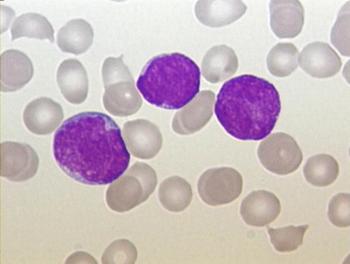
Matthew Krebs, MB, PhD Discusses Phase 1 PALOMA Trial Results of Subcutaneous Amivantamab in Solid Tumors
Matthew Krebs, MB, PhD spoke about efficacy of subcutaneous amivantamab observed in the phase 1 PALOMA trial for patients with solid tumors.
Matthew Krebs, MB, PhD, clinical senior lecturer in Experimental Cancer Medicine at the University of Manchester and Honorary Consultant in Medical Oncology at the Christie Hospital in the United Kingdom, spoke with CancerNetwork® during the
Transcript:
The data cut off was January 2022, and there were 33 patients that had been recruited to [part 1 and part 2]. The population we’d recruited had a median age of about 59 years, and it was quite a heavily pretreated population. Over 70% of patients had 4 or more prior lines of therapy, so it was an advanced patient population. About 85% [of patients] had non–small cell lung carcinoma, of which, most of those were EGFR mutation positive. There were a range of other [patients with] lung cancer included and some other disease types as well.
The toxicity profile was very similar to that given through the intravenous route. One of the key messages we wanted to get across was that the infusion-related reaction incidence was substantially lower through the subcutaneous route than that we’ve seen historically with the intravenous administration through the original [phase 1] CHRYSALIS study [NCT02609776].2 The historical data for the intravenous administration showed the incidence of infusion-related reaction is 67%, of which 2.1% were grade 3. Under the subcutaneous administration in this study, the incidence of infusion-related reaction was just 18.2%, and all of those being grade 1 or grade 2, so no grade 3 events there.
The other key message is that we were able to administer the full dose on cycle 1, day 1 without any negative adverse events. Overall, it seems to be well tolerated. To touch on some of those main adverse events, they’re very similar to the intravenous administration. They’re in keeping with both EGFR- and MET-related toxicities, which you’d expect for this compound. Rash was quite common, paronychia as well as some dry skin and fatigue in relation to EGFR inhibition. For MET-directed toxicities, we saw some peripheral edema and hypoalbuminemia. The incidents are very similar for those for the [intraperitoneal] administration.
References
- Krebs MG, Johnson ML, Cho BC, et al. Subcutaneous delivery of amivantamab in patients with advanced solid malignancies: Initial safety and pharmacokinetic results from the PALOMA study. Presented at the American Association for Cancer Research 2022 Annual Meeting. New Orleans, LA. April 8-13, 2022. Abstract CT198 / 23.
- Park K, Haura EB, Leighl NB, et al. Amivantamab in EGFR exon 20 insertion-mutated non-small-cell lung cancer progressing on platinum chemotherapy: Initial results from the CHRYSALIS phase I study. J Clin Oncol. 2021;39(30):3391-3402. doi:10.1200/JCO.21.00662
Newsletter
Stay up to date on recent advances in the multidisciplinary approach to cancer.

















































































